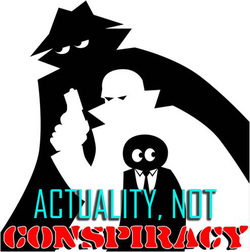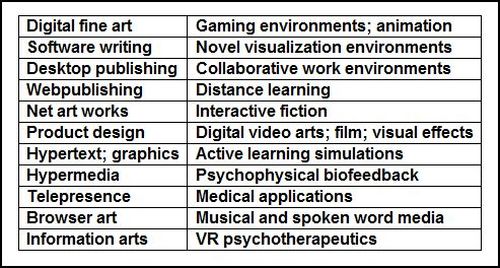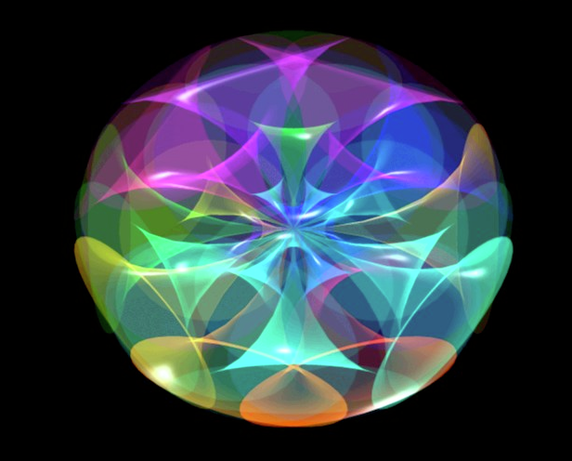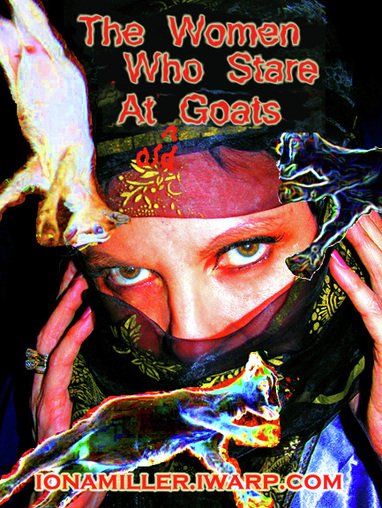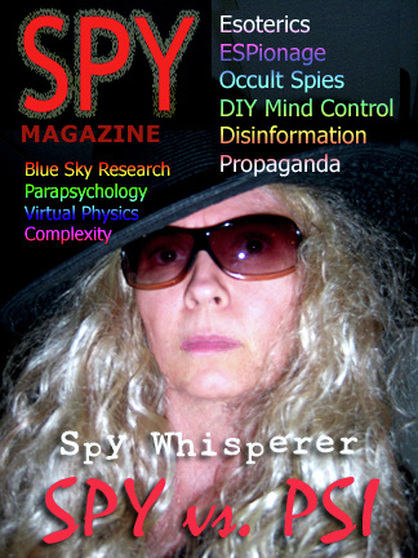IONA MILLER 2010
BLUE SKY SPY
http://ionamiller2010.iwarp.com/
2020 Foresight Live From the Paradox
AvantGardener, Iona Miller,
Live from The Paradox, where the Utopian meets the Draconian ....
Working at the bleeding edge of Intelligence
2010 Archive
http://ionamiller2010.iwarp.com/
2020 Foresight Live From the Paradox
AvantGardener, Iona Miller,
Live from The Paradox, where the Utopian meets the Draconian ....
Working at the bleeding edge of Intelligence
2010 Archive
YOU EMBODY YOUR THOUGHTS
Our bodies are the repository of all of our experiences, shaped and formed by the sum total of external and internal influences. The body is literally the Unconscious. We embody our beliefs, thoughts, emotions, experiences.
Clusters of metaphors describe experiences better than any single metaphor can. Because of the ubiquitous nature of clustering in fractal systems, we suspect that complex dynamics are at work in our inherent experience of ourselves and our reality through epistemological metaphors - how we know what we know, and what it's like. Thus metaphor is much more than a superficial phenomenon of language--not a means of expression as much as a means of apprehension, which shapes our thoughts and judgements, and structures our language.
Our perceptual experience is rooted in a few key conceptual categories: 1) Thought is embodied: it grows out of bodily experience and makes sense in terms of it; we are grounded in perception, body movement, and our physical and social character. 2) Thought is imaginative: it unfolds spontaneously in terms of metaphor and psychophysical imagery, which is much more than literal. This imaginal capacity is also embodied indirectly in metaphors and images based on experience, particularly bodily experience. 3) Thought has gestalt properties: this is neither a structuralist nor functionalist perspective, but one of radical nondualism. Self-organization with emergent properties is a descriptor of dynamic processes with a fractal blueprint. 4) Thought has an ecological structure: nature follows the path of least resistance in its webwork of synergetic interaction, and the ecology of systems depends on the overall structure which is in constant dynamic motion.
Thus thought is much more than the mechanical manipulation of abstract or abstracted symbols. Symbols do not require interpretation, but arise as emergent properties with inherent “meaning.” Thought is strongly rooted in the neurology of the brain, in orientation-sensitive cells, and center-surround receptive fields, the interface of the part with the whole. The sensory-motor system is fundamental in this orienting, as is metaphor which builds our neural maps. This allows sensory-motor structures to play a role in even abstract reasoning.
VIEW IT AND DO IT
Our way of storing, categorizing, and retrieving information can be changed. Outgrown maps disrupt the creative process through which we realize our values and beliefs. Changing beliefs, cognitively and behaviorally, is quite possible with a few simple techniques, such as being the Watcher, overwriting old patterns and behaviors. Focus on what you want, not what you don't want.
You can create the life you want as long as you aren't attached to the outcome. Your feelings don't need to be egotistically attached to or identified with the results. It doesn't affect your peace and happiness at the core level, though emotions still arise and fall away.
Emotions are adaptations that help regulate metabolism and survival. They are inseparable from ideas of reward/punishment, pleasure/pain, approach/withdrawl, personal advantage/disadvantage, even good/evil. You can tell if you are moving away from or toward your values by your background emotions, such as tension/relaxation, fatigue/energy, well being/malaise, and anticipation/dread.
We all have an internal map of reality and our beliefs generate our reality. Our main agenda is to be right about our beliefs. Values are the source and desire for motivation. Motivation comes from values; sense of safety comes from beliefs. If you create a 1 minute movie internally about what you WANT it is more effective than obsessing on what you don't want. It is even more effective when you are in a meditative state.
The tension between continuity and change is not simply an ancient philosophical conundrum. It is also at the root of the most pressing questions of our time. Scientific theories in physics and cosmology; in biology and evolution; in psychology, neuroscience, and studies of consciousness and personal identity are all informed by questions of change and continuity.
We wrestle with the tensions of tradition vs. innovation in the law, in religious thought, and political life. Culture itself is the expression of the tension between continuity and change. Our daily headlines announce it!
In addition, the pace of change in scientific discovery, religious thought and practice, technological advancement, environmental transformation, and globalized culture is accelerating at such a dizzying rate that our abilities to cope are tested to the limits. But the key to our thriving and flourishing as human beings, perhaps, to our very survival, depends on how we find continuity in the midst of such rapid change.
"There are no unnatural or supernatural phenomena, only very large gaps in our knowledge of what is natural... We should strive to fill those gaps of ignorance." -Astronaut, Edgar Mitchell
Our bodies are the repository of all of our experiences, shaped and formed by the sum total of external and internal influences. The body is literally the Unconscious. We embody our beliefs, thoughts, emotions, experiences.
Clusters of metaphors describe experiences better than any single metaphor can. Because of the ubiquitous nature of clustering in fractal systems, we suspect that complex dynamics are at work in our inherent experience of ourselves and our reality through epistemological metaphors - how we know what we know, and what it's like. Thus metaphor is much more than a superficial phenomenon of language--not a means of expression as much as a means of apprehension, which shapes our thoughts and judgements, and structures our language.
Our perceptual experience is rooted in a few key conceptual categories: 1) Thought is embodied: it grows out of bodily experience and makes sense in terms of it; we are grounded in perception, body movement, and our physical and social character. 2) Thought is imaginative: it unfolds spontaneously in terms of metaphor and psychophysical imagery, which is much more than literal. This imaginal capacity is also embodied indirectly in metaphors and images based on experience, particularly bodily experience. 3) Thought has gestalt properties: this is neither a structuralist nor functionalist perspective, but one of radical nondualism. Self-organization with emergent properties is a descriptor of dynamic processes with a fractal blueprint. 4) Thought has an ecological structure: nature follows the path of least resistance in its webwork of synergetic interaction, and the ecology of systems depends on the overall structure which is in constant dynamic motion.
Thus thought is much more than the mechanical manipulation of abstract or abstracted symbols. Symbols do not require interpretation, but arise as emergent properties with inherent “meaning.” Thought is strongly rooted in the neurology of the brain, in orientation-sensitive cells, and center-surround receptive fields, the interface of the part with the whole. The sensory-motor system is fundamental in this orienting, as is metaphor which builds our neural maps. This allows sensory-motor structures to play a role in even abstract reasoning.
VIEW IT AND DO IT
Our way of storing, categorizing, and retrieving information can be changed. Outgrown maps disrupt the creative process through which we realize our values and beliefs. Changing beliefs, cognitively and behaviorally, is quite possible with a few simple techniques, such as being the Watcher, overwriting old patterns and behaviors. Focus on what you want, not what you don't want.
You can create the life you want as long as you aren't attached to the outcome. Your feelings don't need to be egotistically attached to or identified with the results. It doesn't affect your peace and happiness at the core level, though emotions still arise and fall away.
Emotions are adaptations that help regulate metabolism and survival. They are inseparable from ideas of reward/punishment, pleasure/pain, approach/withdrawl, personal advantage/disadvantage, even good/evil. You can tell if you are moving away from or toward your values by your background emotions, such as tension/relaxation, fatigue/energy, well being/malaise, and anticipation/dread.
We all have an internal map of reality and our beliefs generate our reality. Our main agenda is to be right about our beliefs. Values are the source and desire for motivation. Motivation comes from values; sense of safety comes from beliefs. If you create a 1 minute movie internally about what you WANT it is more effective than obsessing on what you don't want. It is even more effective when you are in a meditative state.
The tension between continuity and change is not simply an ancient philosophical conundrum. It is also at the root of the most pressing questions of our time. Scientific theories in physics and cosmology; in biology and evolution; in psychology, neuroscience, and studies of consciousness and personal identity are all informed by questions of change and continuity.
We wrestle with the tensions of tradition vs. innovation in the law, in religious thought, and political life. Culture itself is the expression of the tension between continuity and change. Our daily headlines announce it!
In addition, the pace of change in scientific discovery, religious thought and practice, technological advancement, environmental transformation, and globalized culture is accelerating at such a dizzying rate that our abilities to cope are tested to the limits. But the key to our thriving and flourishing as human beings, perhaps, to our very survival, depends on how we find continuity in the midst of such rapid change.
"There are no unnatural or supernatural phenomena, only very large gaps in our knowledge of what is natural... We should strive to fill those gaps of ignorance." -Astronaut, Edgar Mitchell
http://ionamiller2010.iwarp.com/
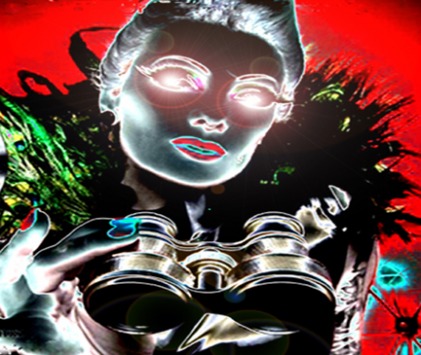
Io2010 About What's New
CryptoVideos
Publications
Project Archive Links
Cloak & Dagger
MLK & COINTEL PRO
Underground to Under Cover
Underground Art
Gartel Art Review
War Is Fraud
Edge Artists
Transmodern Alchemist
Draconian Utopia
Schumann Resonances
HAARP
Helix to Hologram
Sedona Vortex
Pineal DMT
Zero Point
Just Say Know
Dune Meme
St. Germain Code
Manifest Destiny
Uninvited States
Dodecahedral Universe
Antibothis 3
Paranoia 2010
Fog of Lore
MRU
PTSD Politics
Truth For Reel
GOD Never Sleeps
NAPTE 2010 Aftershock: In HARMS Way Grave Consequences Operation Cyanide Corrosive Secrets
Cryptocracy Decoded
Eyes Only
Blue Sky Spy
UFO
Geocities Retrieval
Ayahuasca
Portae Lucis
Saint Germain
Triangular Book
Dragon Lineage
Triangle Book Photos
Hermetic Garden 1 Hermetic Garden 2
Sex & the Sidhe
Bioluminescence
N=50 V=6
Blog
CryptoVideos
Publications
Project Archive Links
Cloak & Dagger
MLK & COINTEL PRO
Underground to Under Cover
Underground Art
Gartel Art Review
War Is Fraud
Edge Artists
Transmodern Alchemist
Draconian Utopia
Schumann Resonances
HAARP
Helix to Hologram
Sedona Vortex
Pineal DMT
Zero Point
Just Say Know
Dune Meme
St. Germain Code
Manifest Destiny
Uninvited States
Dodecahedral Universe
Antibothis 3
Paranoia 2010
Fog of Lore
MRU
PTSD Politics
Truth For Reel
GOD Never Sleeps
NAPTE 2010 Aftershock: In HARMS Way Grave Consequences Operation Cyanide Corrosive Secrets
Cryptocracy Decoded
Eyes Only
Blue Sky Spy
UFO
Geocities Retrieval
Ayahuasca
Portae Lucis
Saint Germain
Triangular Book
Dragon Lineage
Triangle Book Photos
Hermetic Garden 1 Hermetic Garden 2
Sex & the Sidhe
Bioluminescence
N=50 V=6
Blog
World Models:
We model the world by proactively dichotomizing properties (soft/hard, light/dark, fast/slow, big/little, order/disorder, solid/void, subjective/objective, etc. etc. etc.). These are conceptual constructions from the point of view of a signifying agent, an agent with specific mapping purposes. By mapping dichotomies a signifying agent DOES NOT `objectively' assess the world, a signifying agent CREATES dichotomies in direct relation to its own needs and uses. The agent FABRICATES a configuration space for its own use and the result is a map of an agent's own projected preferences. The agent (the `we' in the first sentence) is a sentient biological organism with specific requirements for mapping a world that ARE NOT objective. Our purposes (and our map) are ENTIRELY `subjective' . What's more, the self/world dichotomy at the heart of ALL these constructions is ALSO a conceptual contrivance with a specific purpose; it is NOT an objective aspect of `reality'. ANY construction that results in the notion of either a freestanding `world' OR a freestanding `self' is a synthetic construction, an artifice; certainly a useful contrivance but definitely NOT a truth in the `absolute' sense.
This awful truth about our absolute truths is very freeing. Contrary to pessimistic, self-pitying assessments of this situation, it DOES NOT confine us within the bounds of cognitive closure. Rather, it allows us to understand what it is that sentient entities are up to and why. It allows us to understand a conscious condition wherein signifying agents are caught up in their own constructions for specific purposes. It allows us to see what exactly it is that awareness is employed at in the natural world. It allows us to understand a conscious condition as a condition of world-modeling. And most importantly, it allows us to exceed the world-modeling explanatory parameters that are pre-given within the needs and uses of biological entities.
World-models need not only be informed by the imperatives of biological survival. We are not confined to the concept of a 'self' set in a 'non-self' world, acting on the 'non-self' world in a configuration space defined by three-dimensions, causal-mechanical dynamics, linear time, or the kinds of narrative constructions designed to enable nutrition, procreation and self-protection. Suddenly conscious experience is our oyster in a brand new way. We are indeed obliged to continue entertaining the biological imperative, NOT because it represents an absolute truth about the world, but merely because our biological format is inescapable and needs attending to. What we do beyond that is entirely up to us. We enter a realm of infinite potential limited only by the constraints of our overworn psychological preference for absolute truths. If the human community can adjust to the inescapable absolute truth of contingency in ALL concepts, we can then reconceptualize our global community in more just, stable and sustainable ways. We are not bound by the supposed absolute truths of our biofunctional causal-mechanical configuration space or the causal-mechanical beliefs, behaviors and assumptions that go with it --- the awful combination of materialism, boundaries and brute forces that informed the stunningly horrific behaviors of the 20th century.
We really can do better. But it depends on the players in consciousness studies to see and convey the process of world-modeling in a brand new way. Consciousness studies can provide a brand new truth about our condition and a brand new direction for the human endeavor.
Best,
CH
We model the world by proactively dichotomizing properties (soft/hard, light/dark, fast/slow, big/little, order/disorder, solid/void, subjective/objective, etc. etc. etc.). These are conceptual constructions from the point of view of a signifying agent, an agent with specific mapping purposes. By mapping dichotomies a signifying agent DOES NOT `objectively' assess the world, a signifying agent CREATES dichotomies in direct relation to its own needs and uses. The agent FABRICATES a configuration space for its own use and the result is a map of an agent's own projected preferences. The agent (the `we' in the first sentence) is a sentient biological organism with specific requirements for mapping a world that ARE NOT objective. Our purposes (and our map) are ENTIRELY `subjective' . What's more, the self/world dichotomy at the heart of ALL these constructions is ALSO a conceptual contrivance with a specific purpose; it is NOT an objective aspect of `reality'. ANY construction that results in the notion of either a freestanding `world' OR a freestanding `self' is a synthetic construction, an artifice; certainly a useful contrivance but definitely NOT a truth in the `absolute' sense.
This awful truth about our absolute truths is very freeing. Contrary to pessimistic, self-pitying assessments of this situation, it DOES NOT confine us within the bounds of cognitive closure. Rather, it allows us to understand what it is that sentient entities are up to and why. It allows us to understand a conscious condition wherein signifying agents are caught up in their own constructions for specific purposes. It allows us to see what exactly it is that awareness is employed at in the natural world. It allows us to understand a conscious condition as a condition of world-modeling. And most importantly, it allows us to exceed the world-modeling explanatory parameters that are pre-given within the needs and uses of biological entities.
World-models need not only be informed by the imperatives of biological survival. We are not confined to the concept of a 'self' set in a 'non-self' world, acting on the 'non-self' world in a configuration space defined by three-dimensions, causal-mechanical dynamics, linear time, or the kinds of narrative constructions designed to enable nutrition, procreation and self-protection. Suddenly conscious experience is our oyster in a brand new way. We are indeed obliged to continue entertaining the biological imperative, NOT because it represents an absolute truth about the world, but merely because our biological format is inescapable and needs attending to. What we do beyond that is entirely up to us. We enter a realm of infinite potential limited only by the constraints of our overworn psychological preference for absolute truths. If the human community can adjust to the inescapable absolute truth of contingency in ALL concepts, we can then reconceptualize our global community in more just, stable and sustainable ways. We are not bound by the supposed absolute truths of our biofunctional causal-mechanical configuration space or the causal-mechanical beliefs, behaviors and assumptions that go with it --- the awful combination of materialism, boundaries and brute forces that informed the stunningly horrific behaviors of the 20th century.
We really can do better. But it depends on the players in consciousness studies to see and convey the process of world-modeling in a brand new way. Consciousness studies can provide a brand new truth about our condition and a brand new direction for the human endeavor.
Best,
CH
